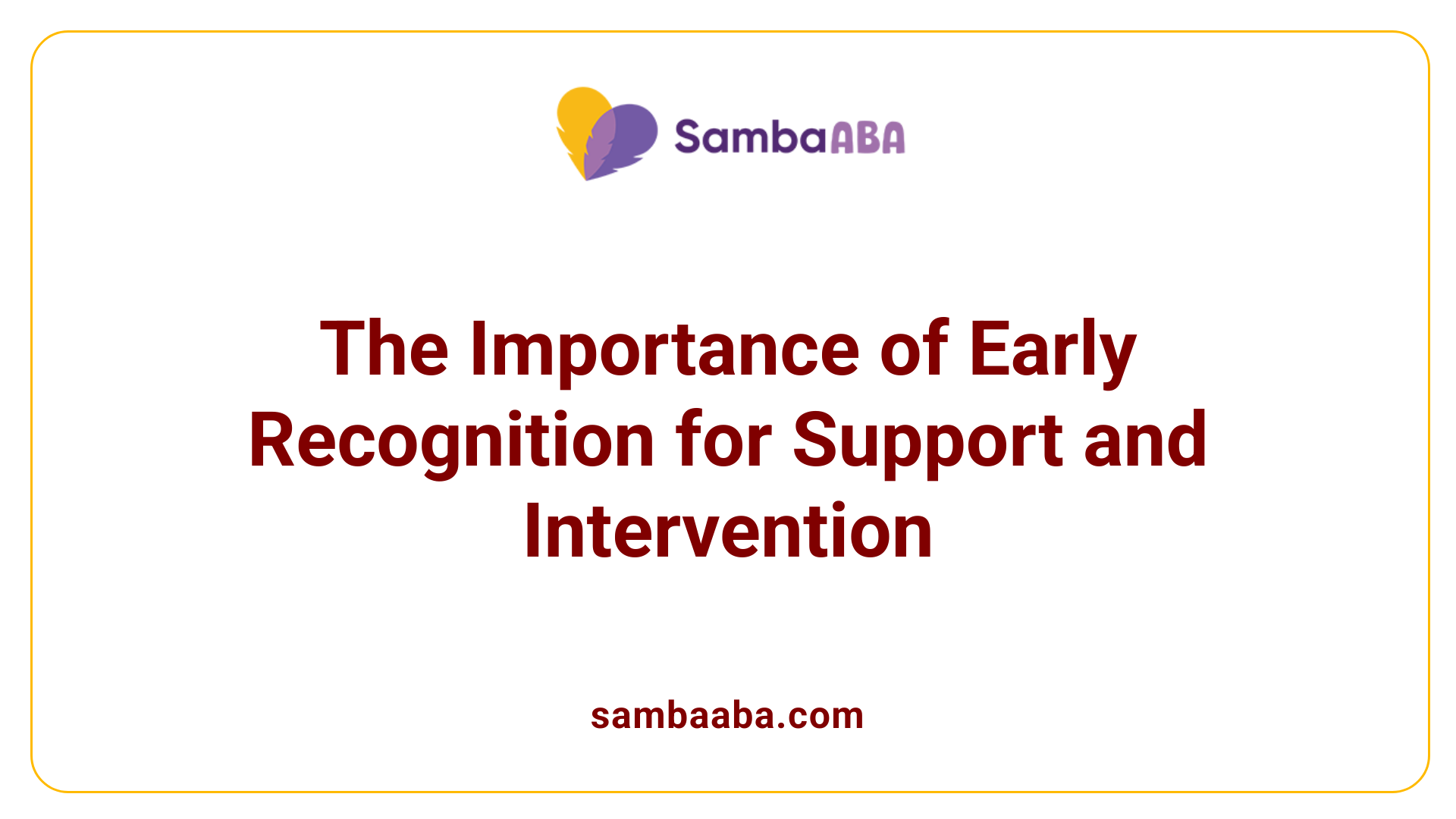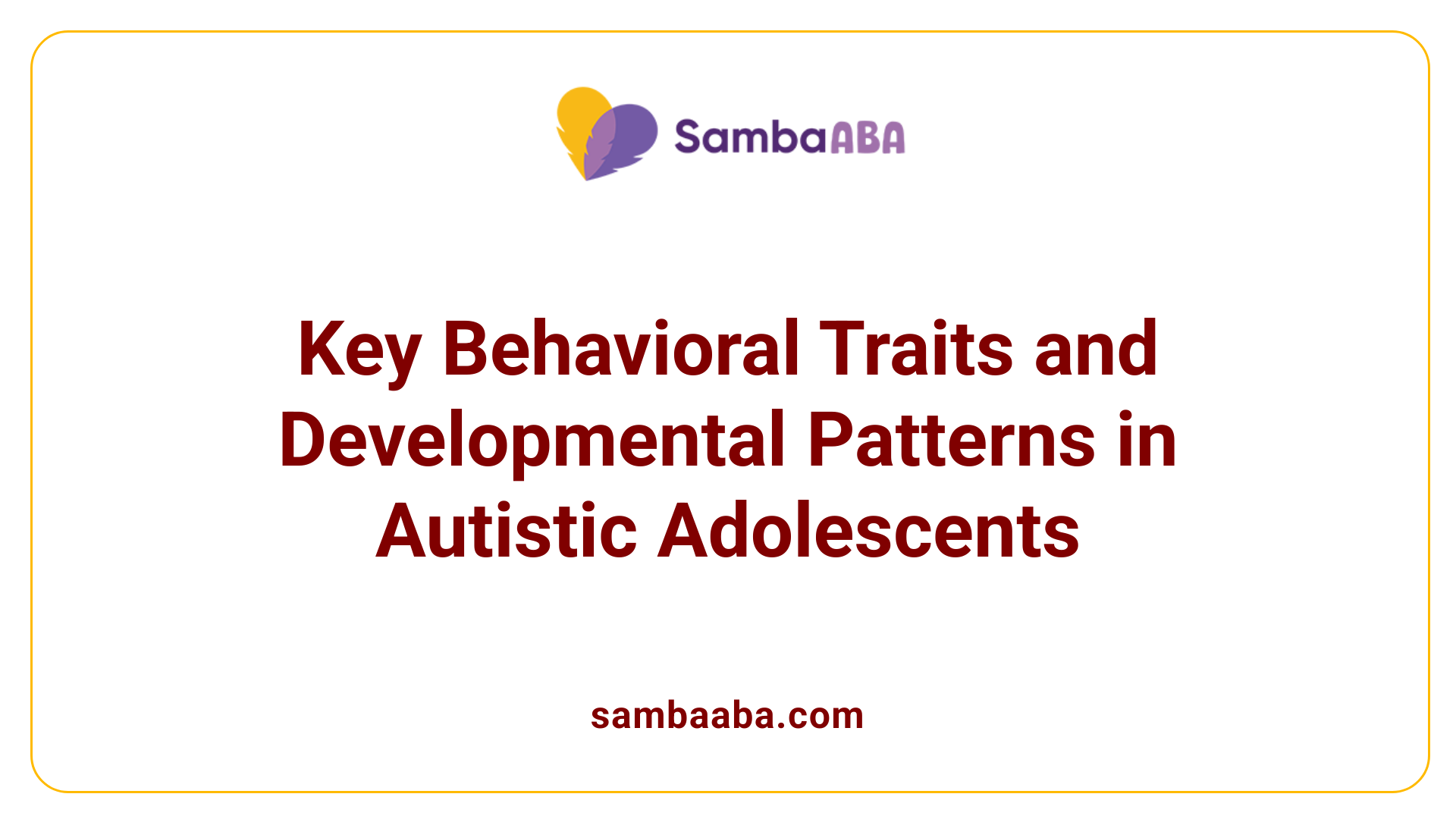Signs & Symptoms of Autism in Teens
Understanding Autism in Adolescence: Recognizing Key Signs and Symptoms
Unveiling the Complexities of Autism in Teenagers
Autism Spectrum Disorder (ASD) manifests in diverse ways during adolescence, a critical period marked by rapid developmental and social changes. Recognizing the signs and symptoms early can significantly enhance support and intervention strategies, fostering better outcomes for autistic teens. This article explores the core characteristics, behavioral patterns, and developmental challenges faced by adolescents on the spectrum, providing comprehensive insights into diagnosis, gender differences, and effective support mechanisms.
Core Signs and Social Communication Challenges in Teenagers

What are the common signs and symptoms of autism in teenagers?
Teenagers with autism often show a range of behaviors that can make social interactions difficult. They typically struggle to form and maintain friendships, as they may find it hard to understand social cues like body language and facial expressions. These difficulties often lead to preferring online interactions over face-to-face conversations.
A notable sign in many autistic teens is their inflexibility or rigidity in thinking. They might insist on routines and become upset with small changes, showing a preference for sameness. Their interests can be intense or very specific, focusing deeply on particular subjects or objects.
Sensory processing challenges are also common. Many teens experience sensory overload or hypersensitivity to sights, sounds, or textures. Some might seek sensory stimulation, while others respond less to pain or temperature, which can impact daily functioning.
Emotionally, these young people might face issues like low self-esteem, high anxiety levels, depression, or withdrawal from social settings. They often find it difficult to label or express their feelings clearly.
Communication barriers are a hallmark of autism. Verbal communication issues can include talking extensively about their interests, taking idioms literally, or speaking in a monotone or singsong voice. Nonverbal cues like eye contact, gestures, and facial expressions are often overlooked or misunderstood.
These multifaceted signs highlight the importance of early recognition and professional assessment, which can lead to targeted support to improve social skills and emotional well-being.
Behavioral and Developmental Patterns in Autistic Teens

What are the behavioral and developmental characteristics of autistic adolescents?
Autistic teenagers often face notable challenges in social communication. They may find it hard to understand nonverbal cues like body language and facial expressions, making social interactions more difficult. This can lead to trouble maintaining conversations, bonding with peers, or forming close friendships, which might result in feelings of isolation and emotional distress such as anxiety or low self-esteem.
Behaviorally, many autistic teens display repetitive or restrictive behaviors. These include stereotypical movements like hand-flapping, rocking, or spinning, which help them self-regulate and cope with sensory overload. They also tend to have intense interests in specific subjects, sometimes focusing on a narrow topic with great detail and enthusiasm.
Dependence on routines is common among autistic adolescents. They often find comfort in predictable patterns, and any disruptions can cause significant upset. This reliance helps create a sense of stability amid their challenges but can also limit flexibility in daily activities.
Sensory sensitivities are another defining feature. Many teens are hypersensitive to sounds, lights, textures, and smells, which can lead to sensory overload. This overload might manifest as frustration, withdrawal, or behaviors like covering their ears or seeking sensory input intentionally.
From a developmental perspective, autistic teens may struggle with flexible thinking and adapting to changes. They often have difficulty understanding or navigating unwritten social rules, which affects their ability to build and maintain relationships. Social and emotional difficulties, including sleep issues, mood swings, and organizational challenges, are common and can impact their overall well-being.
Despite these challenges, targeted support, patience, and understanding can foster positive growth. Strategies that emphasize routine, sensory management, and social skills development can help autistic adolescents improve their daily functioning and overall quality of life.
The Diagnostic Journey in Teenage Autism
Diagnosing autism in teenagers involves a detailed and careful process that begins with gathering comprehensive developmental history from parents or caregivers. This includes noting early childhood behaviors such as limited eye contact, delayed speech, repetitive movements, and social difficulties.
The assessment process includes behavioral observations and standardized testing conducted by a team of specialists, such as psychologists, pediatricians, speech therapists, and occupational therapists. These assessments evaluate the teen’s communication skills, social interaction, behavior patterns, and daily functioning.
Clinicians mainly refer to the diagnostic criteria from the DSM-5, which focus on persistent social communication challenges and repetitive behaviors that are present from early childhood but may be masked or less obvious during adolescence.
Multiple tools are used across different visits, some based on direct observation, parent interviews, and self-reports if the teen is able to participate. This comprehensive approach helps to distinguish autism from other developmental or mental health conditions.
Importantly, diagnosis also involves ruling out other potential explanations such as intellectual disabilities, language delays unrelated to autism, or other psychiatric conditions.
The assessment process is thorough, often involving consensus meetings among specialists to reach a confirmation.
Once a diagnosis is established, professionals aim to deliver the news compassionately. The focus then shifts to supporting the teen’s understanding of their condition and creating tailored intervention plans. These may include strategies to improve social skills, emotional regulation, and independence, ensuring the teen's needs are met with sensitivity and care.
Overall, the diagnostic journey is multidisciplinary, evidence-based, and centered on creating a supportive framework for the teen's development.
Gender Differences and Diagnostic Challenges in Teens
Are there gender differences in autism symptoms among adolescents?
Autism spectrum disorder (ASD) often presents differently in boys and girls, especially during adolescence. Many girls with autism exhibit less obvious social challenges, which can make diagnosis more difficult.
One common phenomenon in females is camouflaging—or masking—behaviors. Girls may consciously or unconsciously imitate social behaviors, maintain eye contact, and develop friendships that help them blend in with their peers. These strategies can mask their difficulties, leading clinicians to overlook their underlying challenges.
Compared to boys, females with autism tend to show better social reciprocity and higher empathy scores. They may also demonstrate fewer sensory sensitivities and insistence on routines. However, this outward adaptability can be deceiving, as their internal experiences might still include significant difficulties with emotional regulation, social understanding, and sensory processing.
The tendency to camouflage and the subtler nature of symptoms in girls often result in delayed or missed diagnoses. As a result, many females with autism are identified only later in life, sometimes during adolescence when social demands increase and masking becomes more exhausting. Traditional diagnostic criteria, largely based on male populations and behaviors, do not always capture these gender-specific presentations.
Societal biases also play a role: stereotypes about how boys and girls 'should' behave can influence clinical attention, leading to underdiagnosis of girls who do not display classic, overt signs. This discrepancy underscores the need for gender-sensitive assessment tools that recognize the unique ways autism manifests across genders.
In summary, recognizing the differences in how autism appears in teens of different genders is crucial. Employing assessments tailored to female presentations and being aware of masking behaviors can improve diagnosis accuracy, ensuring that all adolescents receive appropriate support.
Indicators for Support and Intervention
What indicators suggest that a teenager might need an autism diagnosis or support?
Identifying whether a teenager might benefit from an autism diagnosis or support often involves observing several behavioral and developmental signs. Persistent difficulties in social communication are common, including challenges in understanding body language, facial expressions, and tone of voice. Many teens find it hard to maintain eye contact, take turns in conversations, or form meaningful relationships. They might also have intense interests in specific topics and engage in repetitive behaviors or routines.
Repetitive movements like hand-flapping, rocking, or lining up objects are typical signs. Changes to routines can cause significant distress or anxiety, highlighting their need for predictability. Sensory sensitivities are also frequent; some teens may be overly sensitive or under-responsive to sounds, textures, or lights, leading to sensory overload or indifference.
Social withdrawal and difficulties interpreting social norms are prevalent, often resulting in few friendships or preference for solitude. Many experience signs of anxiety or depression, which may be linked to their social and sensory challenges. These combined indicators can prompt families and professionals to seek formal assessments from specialists such as child psychologists, neurodevelopmental pediatricians, or conduct screenings to determine appropriate support plans.
Supporting better understanding of these signs
Early recognition and intervention can considerably improve outcomes for autistic teens. If these behaviors are observed consistently and across different settings, consulting with professionals is essential to confirm diagnosis and tailor support strategies. Early diagnosis enables access to therapies, social skills programs, and accommodations that can help teens navigate social complexities and sensory sensitivities more comfortably.
Strategies for Supporting Autistic Teens
Supporting autistic teenagers effectively requires a combination of tailored routines, sensory regulation, social skills development, and emotional support. Establishing and maintaining predictable routines helps teens feel more secure and reduces anxiety caused by unexpected changes. Consistent schedules and clear expectations create a structured environment where they can thrive.
Sensory sensitivities are common in autistic teens. Providing sensory regulation strategies, such as sensory breaks, calming activities, and access to sensory tools like noise-canceling headphones or textured objects, can help manage sensory overload and promote emotional well-being.
Developing social skills is vital, especially as teens face increased pressures from school and peer interactions. Using social stories, peer training, and modeling behaviors can teach and reinforce positive social interactions. Planning activities that encourage face-to-face communication helps improve their social confidence, while guidance on understanding social cues and personal boundaries supports better relationship-building.
Emotional difficulties like anxiety and low self-esteem are prevalent among autistic teenagers. Emotional support can be given through individual counseling, cognitive-behavioral therapy (CBT), or acceptance and commitment therapy (ACT). These therapies assist teens in understanding and managing their feelings, promoting resilience and emotional growth. Encouraging self-expression and offering a safe space to discuss worries is also important.
Numerous support resources are available from local authorities and charities. These include counseling services, specialized educational programs, and community groups designed for autistic individuals and their families. Schools can work with SENCOs (Special Educational Needs Coordinators) to develop personalized learning plans and access additional support.
Implementing these strategies requires collaboration among caregivers, educators, and health professionals. Positive reinforcement, patience, and understanding foster an environment where autistic teens can develop essential skills, improve their emotional health, and participate more fully in social and academic life.
Fostering Understanding and Support for Autistic Teens
Recognizing the signs and symptoms of autism in teenagers is crucial for early intervention, support, and enhancing their quality of life. While challenges in social communication, behavior, and sensory processing are common, understanding these traits within the context of adolescent development allows for tailored strategies that promote growth, independence, and emotional well-being. Encouraging ongoing professional assessment, gender-sensitive approaches, and comprehensive support plans ensures that autistic teens receive the necessary tools to thrive in social, educational, and personal spheres. Through awareness and compassion, society can better meet the needs of adolescents on the spectrum and empower them to reach their full potential.
References
- Signs and symptoms of autism in teenagers
- Later signs of autism: pre-teens and teenagers
- Signs of autism in children - NHS
- Signs and Symptoms of Autism Spectrum Disorder - CDC
- Autism spectrum disorder - Symptoms and causes - Mayo Clinic
- Autism symptoms | Autism Speaks
- What to Know About Autism Spectrum Disorder in Teens - WebMD
